This article will analyze and recount a raccoon removal job in Guelph. In this case, a raccoon entered the attic and required more than one visit to be removed. It will detail the steps taken in exclusion, by the technician, to control and eliminate a Racoon that invaded an attic in Parkwood Gardens. This is located between Fife road and Paisley road and is near the Guelph Wastewater Treatment Plant as well as a large number of parks and green space.
The technicians, before the exclusion, must first inspect and confer with the customer or customer’s on the issue and then must inspect for levels of activity. The customer’s original complaint was that There was noise in the attic and a suspected entryway at the rear of the home.
Parkwood Gardens: A small tree-filled suburb just off Guelph.
Parkwood Gardens is an area off Guelph near a Wastewater treatment plant. The city of Guelph was founded in 1827 on St. George’s day, April 23rd. The city was the first planned town in Canada and was designed by a Scottish novelist named John Galt. He arranged it like a European town with a circular center and roads radiating from the cities center. The name was taken from one of the family names of the royal family of England, the German-surname Guelph. The city contains many side streets and the area of Guelph where this visit took place is one of the most forested parts of Guelph. Parkwood Gardens is so named for the half dozen parks that kill the area. These parks are home to a large population of wildlife like raccoons and squirrels.
Exterior Inspection
When the technician arrives on site they will perform an exterior inspection of the outside of the house. The technician will be looking for possible damage that could be an entryway that a raccoon could use to enter the house. When inspecting for wildlife entry the technician must inspect both the walls of the house, the foundation and the roof most especially. While most animals break into an attic or the inside of a wall they can enter through almost any opening large enough. If it is not large enough the wild animal can often make it larger with its powerful jaws and claws. The technician will inspect the roof and other areas for opening and then sealing them and apply a one-way door to humanely evict the wild animal. The technician found multiple damaged roof vents that had been ripped off or damaged by the animal and a damaged soffit was used to access the attic. The technician returned a second time to identify issues with a second invasion into the attic at a different location on the soffit.
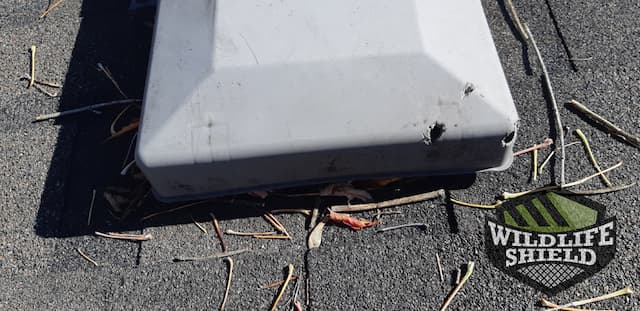

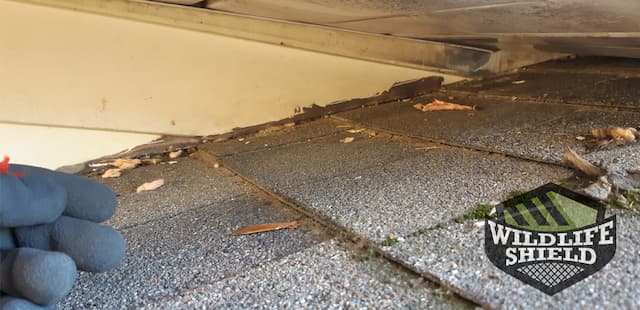
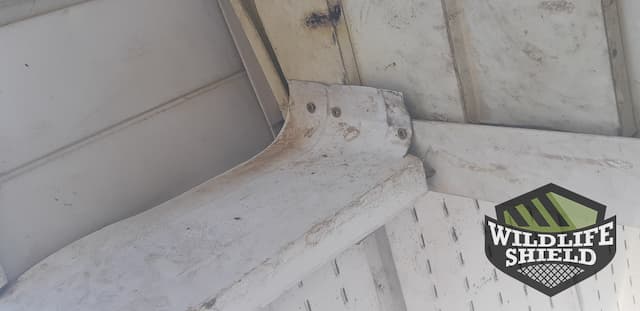
Interior Inspection
Work for this job was done on the exterior only, the attic was not entered. However, in order to prevent the animal from returning or breaking back into the attic the entryway was sprayed with disinfectants and a deodorizer.
Initial Measures
The technician sprayed the entryway the animal used with hospital-grade botanical sterilizers to remove the smell of the animal’s invasion and stop the sent trail that could lead it back to the attic. The technician then explained the animal removal process. The main entryway must be sealed with a one-way door to allow the animal to vacate the attic humanely.
Proposed Exclusion
The technician began sealing off roof vents using sturdy steel cages. The plastic roof vents were mostly broken and were accessible to wild animals and pests like rodents and squirrels. The square roof vents were sealed off and exclusion was performed on the base of a steel chimney also on the roof. The soffit under a section of the roof was the entry point the animal used to get into the attic and was sealed off with exclusion and a one-way door. The raccoon was vacated from the attic but another raccoon returned 2 months later. As all exclusion is covered by a 2-year warranty the technician returned to exclude a different section of soffit and the roof overhang where the animal penetrated.
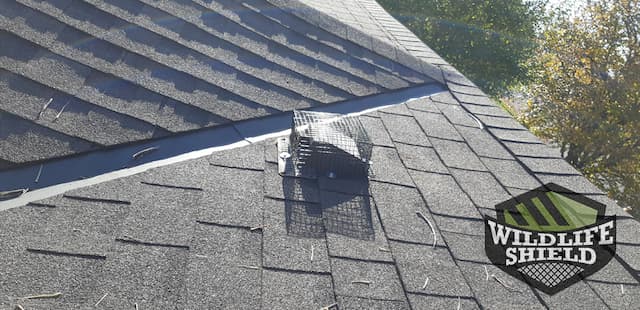
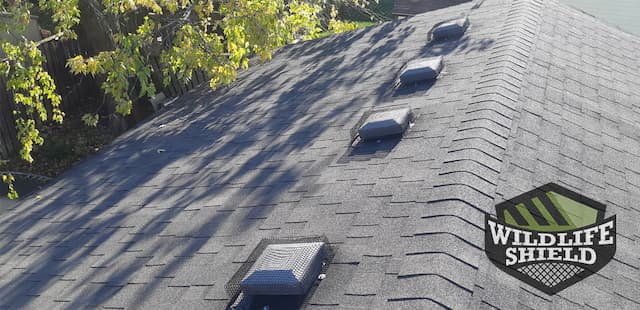

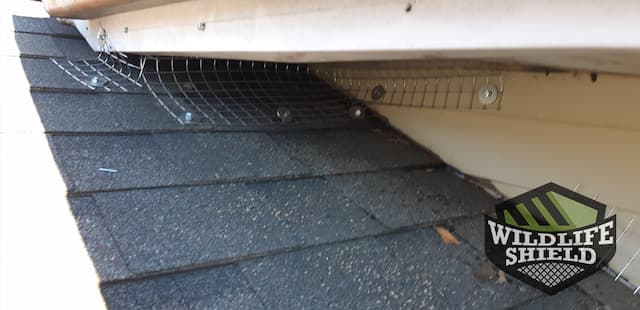
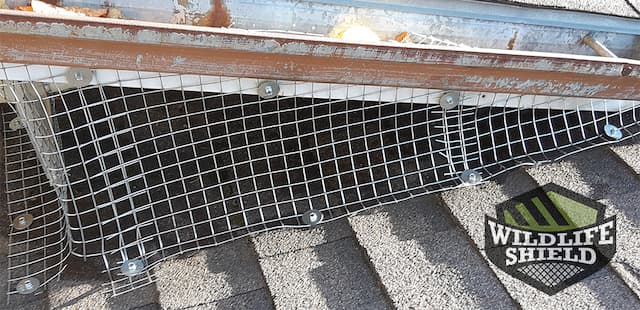
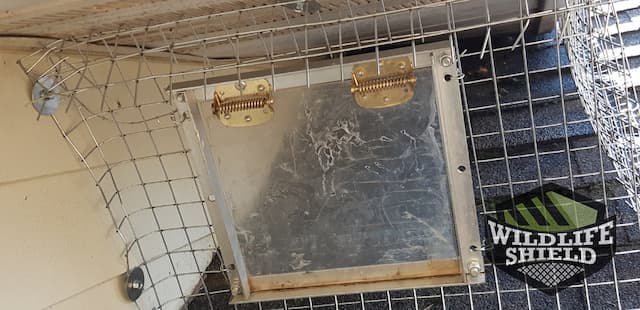
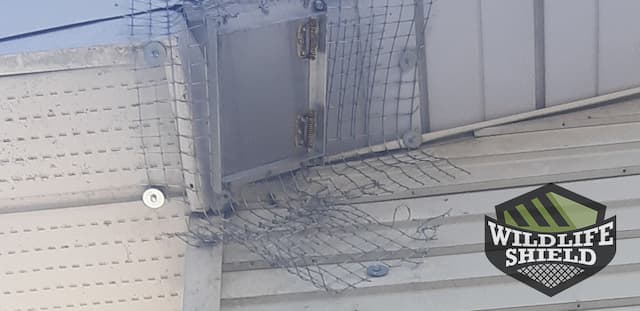
Conclusion
The inspection of the roof and attic revealed a massive number of openings that needed to be sealed. The exclusion was extensive and the removal of the raccoon was successful in the first and second cases. Exclusion is the most effective way of removing an animal humanely from an attic. The exclusion included the sealing of two entry points and sealing of 12 roof vents and two soffits as well as two pipe vent covers. The entryway was treated with sterilizers and deodorizers and the customer was satisfied with the work.